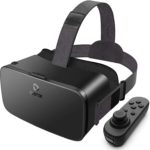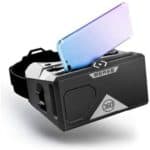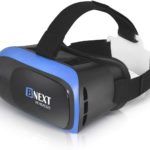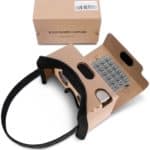Best Phone VR Headset
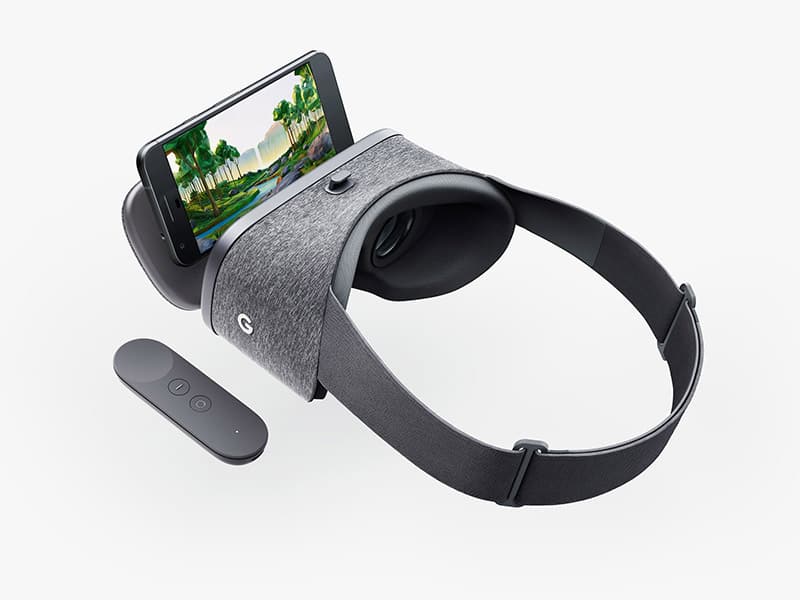
Phone VR headsets are a viable alternative to full-fat headsets because they make use of a device most people already own, whether that’s an Android or iOS device. They are cost-effective, easy to set up, and offer an accessible entry point into the world of VR.
Phone VR headsets generally have no electronic parts, consisting of no more than lenses strapped to a casing to house the phone. By delegating the heavy lifting to the phone, these ultra-portable headsets allow for untethered use, albeit with some fairly significant compromises compared to dedicated headsets linked up to a PC. Not least, the pared-down immersion of the VR experience and the watered-down choice of apps/games.
If you are comfortable accepting these for affordability and ease of use, then phone VR headsets are an excellent way to experience VR on the cheap or test the waters before buying a full-fat dedicated headset.
For this guide, we’ve pulled together our top recommendations for the best phone VR headsets you can currently buy.
Products at a Glance
Best Phone VR Headset
- Snug and comfortable fit
- Controller
- Compatible with a good range of phones
- Adjustable pupil distance and strap
- Limited controller functionality in iOS
- Pricey by phone VR headset standards
The Destek V5 VR Headset brings a premium feel to phone VR with a build quality and looks that run contrary to what you’d expect from a low-cost VR headset. It features aspheric, anti-distortion, and anti-blue light lenses that offer an immersive 110-degree field of view for a sharp and crisp viewing experience. It’s a slick headset that also conveniently ships with a mini-controller.
The lenses pair with a surprisingly comfortable T-shaped headband that delivers a snug fit thanks to three-way adjustments on the top, front, and side straps. Interpupillary distance adjustments help in that respect, too, and simplify finding the proper position for the sharpest, most immersive visuals.
The point of contact between the lenses and the user is cushioned by a comfy silicone pad designed to prevent light bleed from the outside reaching into the headset and diluting the VR experience. The pad has a strategically placed slit that sits at the top of the nose to accommodate all types of face and nose sizes.
Users should note that while the controller is a welcome accessory, functionality is limited to volume control, play/pause, and back controls when paired with an iOS device. The so-called ‘Game Mode’ where you can use the A/B/X/Y buttons and thumbstick only works for Android phones. The Destek V5 does, however, have a button mounted on the headset itself to help with in-app navigation that works regardless of the phone, which mitigates the diluted functionality of the controller for iOS users somewhat.
The Destek V5 VR Headset’s asking price of around $40 is rather pricey by phone VR headset standards. That said, this is miles away from the hundreds of dollars required to secure a dedicated headset like an Oculus Rift or Valve Index.
Per the official documentation, the Destek V5 VR Headset supports phones sized between 4.7 and 6.8-inches as long as they feature a gyroscope. Compatible models range from the Samsung S20, S10, Note 10, Note 9, Note 8, A50, A51, and A71 to the iPhone 12, 11, X, XR, 6, 6S, 7, 8, SE.
- Comfortable design with plenty of padding
- Compatible with 4.8-inches to 6.2-inches phones
- Adjustable IPD and headband
- Two mounted input buttons
- Free access to Merge Miniverse VR experiences
- Expensive
- Prone to tearing
Though marketed squarely at educational settings, the Merge AR/VR Headset is suitable for all manner of phone VR apps and games. Its blocky design isn’t the most aesthetically pleasing, but this is to favor comfort and broad compatibility with all head sizes and shapes thanks to generous foam cushioning around the eyes and face and ensure durability even when subjected to regular knocks and bumps.
The headset features a pair of 42 mm lenses with a 96-degree field of view. The IPD can be adjusted, and the lenses allow for enough room for use with glasses. The straps are also fully adjustable, making easy work of finding a snug fit whatever the user’s head size. Additionally, the headset features two mounted input buttons to navigate content, games, and videos easily.
Another strong point is that the Merge AR/VR Headset grants access to the Merge Miniverse, a stacked library of hundreds of VR experiences available to download and sample for free. These range from virtual field trips provided by the likes of the BBC and National Geographic to games such as Ostrich Racing and Star Wars Rogue One.
The Merge AR/VR Headset is compatible with any phone measuring anywhere between 4.8-inches and 6.2-inches, whether that’s an Android or iOS device. Popular phones that pair well with the Merge AR/VR Headset include the iPhone 6, iPhone 7 Plus, iPhone 8 Plus, Samsung S20, S10, and Note 10, to name a few.
While durable, the Merge AR/VR Headset is prone to tearing around the phone casing after sustained, prolonged use, something that is disappointing given the $50 asking price – an expensive price tag for a phone VR headset. Though, with careful care and attention and regular cleaning, the problem is largely avoided.
- Smartphone compatibility
- Well-padded nose piece and snug headband fit
- Great price
- Focus and depth adjustments
- No mounted input button
- Cheap build quality
For those that want to make the most of their money without spending too much, the BNEXT VR Headset is a strong option that delivers a good VR experience without any added niceties. Priced at around $30, it’s very affordable and provides everything you need to get going.
Comfort is a big highlight with a soft, plush, breathable nose piece that does wonders to reduce pressure, alongside a fully adjustable headband, focus, and depth adjustments to hone in on the clearest image possible and reduce distortion. We are impressed with the comfort levels on offer here, given the price point.
The sliding phone casing of the BNEXT VR Headset is also a boon, greatly simplifying the process of aligning your phone correctly. The overall design means the headset is a little front-heavy, but this is a problem most, if not all, phone VR headsets suffer from to varying degrees. The headset is available in three colors (red, blue, and silver), too, for those who want a bit of choice regarding aesthetics.
As for smartphone compatibility, manufacturer BNEXT describes the headset as ‘universal virtual reality goggles’ that support phones sized anywhere from 4-inches to 6.3-inches, from Android and iOS camps as long as they feature a gyroscope. Some compatible models include the iPhone X, XR, XS, 8, 8 plus, 9, 9 plus, 11, 11 pro, 12 mini, 12 pro, SE, and Samsung Note 20, S20, OnePlus phones, and Google Pixel phones.
The absence of an input button to control apps mounted on the BNEXT VR Headset is certainly missed, mainly as many other phone VR headsets include this small but handy feature. Another point of contention is the cheap build quality. It comes with the territory of low-cost products, but BNEXT VR Headset’s cheap plastic feel may not suit those that want a more premium feel – look to the Destek V5 VR Headset for that.
- Ultra low cost
- Styled on the Google Cardboard
- Broad phone compatibility
- Includes headband
- Input button
- Made of cardboard
- Questionable durability
While $30 to $50 is a reasonable price to pay for a decent VR experience, it’s possible to drop even lower thanks to copycat headsets that came out of the woodwork in the wake of the Google Cardboard. The Topmaxions Cardboard V2 is one of the best among them and only costs $6.
Much like the Google Cardboard, it’s a cardboard shell designed to house a smartphone, latched thanks to a strong strip of velcro and a pad with 24 suction cups to keep it firmly in place. Unlike Google’s headset, the Topmaxions Cardboard V2 features a strip of sponge padding on the nose pad, fore pad, and headband for hands-free use. The headband can’t be adjusted but is made of flexible material, suitable for most head sizes.
Overall, these features work well enough to add a bit of comfort to the VR experience, something we wouldn’t expect at such a low cost. The Topmaxions Cardboard V2 can accommodate any phone measuring 3.5-inches to 6-inches, including models from Apple, Samsung, and the like.
The headset includes a pair of 37 mm biconvex lenses. There are no adjustment features, but the headset does feature a magnetic input button to interact with apps and games on the fly without taking the phone out of the casing.
It’s hard to avoid the fact that the Topmaxions Cardboard V2 is made of cardboard, albeit AAA-grade corrugated cardboard, and as such, durability isn’t exactly built into the headset. It may last a few months and possibly longer with proper care, but it’s designed to sample VR rather than be a permanent, long-term tool. For us, the Topmaxions Cardboard V2 is an ultra-low-cost way to try out VR to see if it’s for you before jumping to a more robust and expensive headset.
Our Verdict
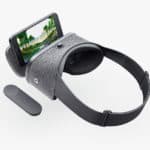
Best Phone VR Headset
Our top pick is the Destek V5 VR Headset for offering users an affordable entry point into VR without sacrificing much in the way of comfort and design. It’s compatible with a good range of phones, features plenty of adjustments to find the right fit, and comes packed with a useful controller, to boot.
A close runner-up, the Merge AR/VR Headset is another strong option for those looking to experience VR without spending a fortune. It’s comfortable, easy to use, adjustable, and grants access to a broad range of free apps via the Merge Miniverse. Some misgivings surrounding durability are easily effaced by this headset’s surprisingly immersive VR experience, not least if you use it for educational purposes.
Even lower down the pricing scale, we have the BNEXT VR Headset. It’s a snug-fitting headset with ample padding and adjustments that features everything required to transform your phone into a VR-ready device.
Finally, for those on a very tight budget that simply want to experience VR for the first time, the Topmaxions Cardboard V2 is an ideal low-cost, throwaway headset that costs a mere $6. The cardboard design doesn’t scream durability, but decent padding, broad phone compatibility, and an useful input button make it a top ‘testing the waters’ option.
Don’t hesitate to get in touch via the comments section below should you have any questions, concerns, or even phone VR headset recommendations of your own to share.


